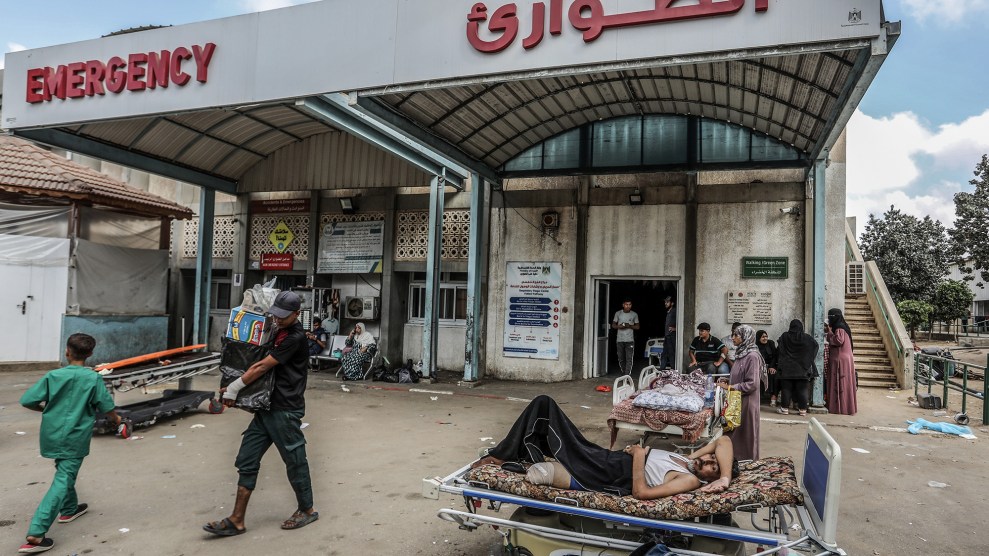
Patients being evacuated from the European Hospital to be transferred to Nasser Hospital, two of the few health centers operating in the Gaza Strip. Abed Rahim Khatib/dpa/ZUMA
After 50 days, Gaza European Hospital, one of the few trauma centers serving the Gaza strip, reopened, according to the Gaza Health Ministry. The hospital has been a vital part of the crumbling medical infrastructure in the region. It reopened earlier this month.
In August, I told the story of two medical students who worked at Gaza European Hospital before it was shuttered and forcibly evacuated on July 1st. The medical center remained closed amid bombardment in the area for over a month. Each student told me harrowing stories of their time suddenly propelled to the job of full-time doctors amid the devastation of the medical system in Gaza.
You can read the full piece, here:
Now, the students are back to work. Hasan Ali Abu Ghalyoon, a dental student I interviewed via WhatsApp in August, returned to European Hospital on September 9th. He said things are different there now.
Before the July evacuation, he slept at the hospital. Now, he commutes back and forth from his family’s tent in Deir al-Balah, a trip that takes him three or four hours a day. It is only about a seven-mile journey. But in Gaza, it can be treacherous.
Normally, he takes a hospital-provided bus to work. Last Friday, though, “I was a little late for the bus and I was forced to go by car,” he said. On his journey, he passed a destroyed World Health Organization warehouse, a torched mosque, and innumerable teetering husks of buildings and dust-covered tents. “I took three cars on my way to get from my tent to the hospital and I walked through many destroyed streets on foot.”
In some areas of eastern Gaza, there are no cars at all. The trip, he said, cost him 25 shekels, or about eight dollars, thanks to the lack of fuel entering Gaza. Before the war, transportation wouldn’t cost a thing.
Nermeen Ziyad Abo Mostafa, another student volunteer, hears the zanana—Gazan slang for the incessant buzzing of drones overhead—on her way to the hospital. “It was not easy to reopen it, because all the hospital’s property was stolen,” she said. The hospital is still not fully equipped, she explained, but medical teams are doing their best to work with what they have.
Once the students arrive, they see “mostly burns and fractures,” Abu Ghalyoon said. Every day, there are patients requiring skin grafts.
Another change: there are now fewer international delegations than before. The flow of international medics into the Gaza strip has slowed to a trickle. The Israeli military has hit international aid workers like those from World Central Kitchen, after a vehicle from the group was bombed in April, and UN workers, like those from the World Food Program, whose vehicles were struck in August. Supply shortages are ongoing. As Abu Ghalyoon put it: “There is a very, very severe shortage of all medicines. The medical equipment is old and sometimes works and sometimes doesn’t.”
On September 12th, the World Health Organization released a report estimating that over 22,500 people in Gaza have suffered “life-changing injuries” since Israel’s offensive in Gaza began. Most of these injuries—about 13,000 to 17,000—are what the WHO report calls “severe limb injuries,” and at least 3,000 are amputations.
“The huge surge in rehabilitation needs occurs in parallel with the ongoing decimation of the health system,” said Dr. Richard Peeperkorn, WHO Representative in the occupied Palestinian territory. “Patients can’t get the care they need. Acute rehabilitation services are severely disrupted and specialized care for complex injuries is not available, placing patients’ lives at risk. Immediate and long-term support is urgently needed to address the enormous rehabilitation needs.”
















